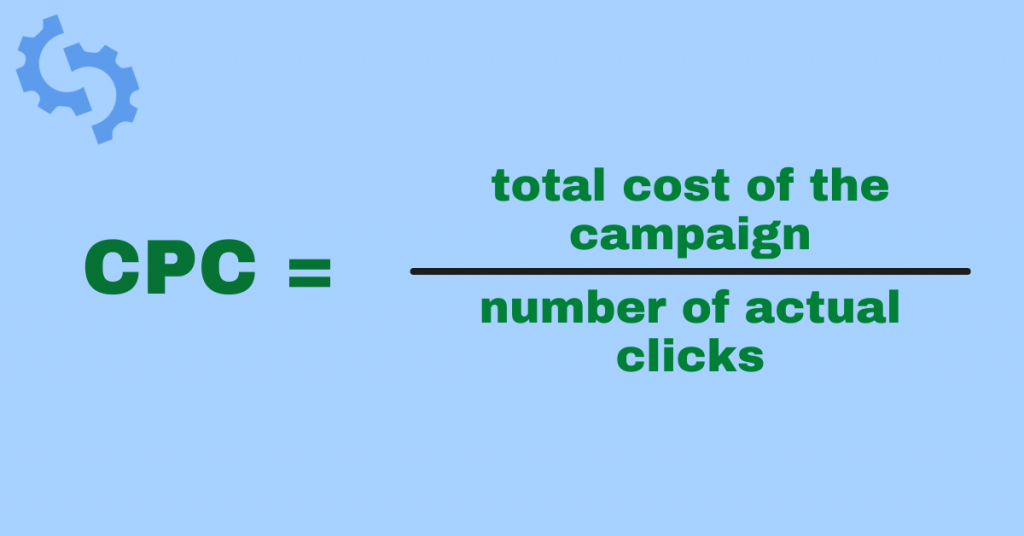
What is CPC, and how can it help your business grow? Understanding CPC marketing and integrating it into your strategy is crucial for your online advertising plan. To help you understand CPC meaning and usage, we will break down the key components of cost per click to help you optimize it for your business.
What Does CPC Stand For?
CPC stands for cost-per-click. It is a measurement that tells you how much you pay for each click in a digital advertising campaign. This provides an additional level of detail to your marketing strategy that tells you more than simply the total cost of the advertising campaign.

What is CPC Advertising?
CPC advertising is a common method used by websites to charge advertisers for the benefit of placing ads on their sites. Google Ads (formerly known as Google AdWords) is the most popular facilitator of this marketing relationship, though there are others.
How to Calculate CPC
You can use an online CPC calculator, but the formula is simple enough. Your Google Adwords (or another third-party advertising platform) should have your metrics on an admin dashboard. Simply locate the total number of clicks in any given ad campaign.

Take the total cost of the campaign and divide it by the number of actual clicks. This gives your CPC rate.
For example, a campaign that cost $1,500 and generated 644 clicks has a CPC rate of $2.32.
Conceptually, then, instead of thinking of the total cost of an ad campaign you can think about how much you are paying to receive one click to your landing page from an ad.
PPC Cost
PPC, or pay-per-click, refers to the overall advertising payment strategy. When marketers talk about PPC strategy, they are mainly talking about how they are paying for their advertising. Rather than a flat fee, the number of impressions (we’ll get to that later), or other payment structure, they are paying based on how many clicks the ad receives.
Cost per click is a way to measure the real value of your PPC strategy. For example, if a shoe company is investing ad money in a PPC campaign, it needs to know how much each click is ultimately costing them.
Many PPC strategies are structured with a specific daily budget. So if you have a $200 budget per day and your ad received enough clicks to use that entire budget, the ad will not be shown again on that site until the next day.
CPC Benchmarks Per Industry
CPC rates vary widely by industry. Industries with high-cost products and long sales cycles (like SaaS) invest more in their advertising because each individual customer spends more money.
Companies with shorter sales cycles and lower-cost products (such as personal care or online grocery ordering) want to pay less per click because each customer spends at most hundreds of dollars, not thousands.
Here are some of the key cost-per-click industry benchmarks, according to Instapage. This graph shows the average cost for several industries.

Image source: Instapage
We can see that the insurance industry has a very high CPC, whereas the electronics CPC rate was under $1. This makes sense since an insurance provider wants to form lifelong relationships with businesses and people and so needs fewer individual customers. An electronics company is more transactional and moves many separate pieces of inventory.
Determining whether you have a “good” CPC will depend upon your industry.
CPC vs. CPM
CPC is not the only advertising payment structure. It’s main alternative is CPM, which stands for cost per mille OR cost per thousand.

Image source: ironSource
In this case, the advertiser pays a fixed rate for every thousand impressions of the ad. In other words, every time one thousand different people see your ad on the internet, you pay a previously agreed-upon fee. CPM is good for brands that are focusing on brand recognition more than quick conversion.
CPC vs. CPA
Another method for calculating the cost and value of a campaign is CPA, which stands for cost per action OR cost per acquisition.
In this case, the advertiser determines a certain desired action - usually a sale, opt-in, or subscription - and pays per the number of actions taken.
Under this system, the advertiser is primarily paying for advertising that actually converts, not just impressions. Consequently, the CPA tends to be higher because the advertiser is paying for a more valuable action than just an impression or a click.
How to Optimize CPC in Google AdWords
Part of understanding and interpreting CPC meaning is learning how to take that information and apply it to achieve a higher Google Ads quality score.
The quality score is Google’s way of determining how useful your content is to consumers. Higher quality content is privileged with better ad positioning on web pages and lower CPC rates.
Google is pretty savvy at weeding out websites that just try to fake their quality score. No amount of paid advertising will make up for a poorly designed website or an ad that doesn’t connect with customer queries.
According to Google, quality score is judged on three categories:
- Expected clickthrough rate
- Landing page experience
- Ad relevance

Image source: Instapage
In each of the three categories, your ads and landing pages can earn the following scores:
- Below Average
- Average
- Above Average
All of this information is accessible through your Google Ads dashboard.
Since we know how Google is scoring our campaigns, we can now determine how to achieve a better cost per click rate.
Relevant Ads
The most obvious way to improve your CPC rate is by offering more relevant ads. This means the ads you offer more closely match the search terms that people are looking for.
You can do this by:
- Targeting individual ads to specific search terms
- Grouping keywords into themes
- More closely aligning your theme groups to your specific products.
Basically, each ad should target one specific search phrase, but your ad groups benefit by targeting related searches. For example “vacation rental in Tampa” and “rental home in Tampa,” are different, but related searches.
Choosing the Right Keywords
You can determine the right keywords for your ads and landing pages by conducting quality keyword research. Identifying long-tail keywords and prioritizing local searches will account for additional traffic.
Organizing these keywords into groups that you can match to your business’s offerings will also help you streamline your CPC advertising strategy, creating groups of ads that effectively match your products with consumers’ searches.
Adding Negative Keywords
Your pay-per-click cost will likely hinge on how closely your ads match to customers’ searches. Part of this is ensuring that your ads don’t match the wrong searches.

Negative keywords are words and phrases that you don’t want to match to your ads. They typically sound similar to your desired search terms but have different meanings.
For example, a company advertising its web hosting services should exclude any keywords having to do with in-home entertaining - that’s not the type of “hosting” we are talking about.
Savvy marketers can get even more specific by excluding searchers they think aren’t likely to convert. For example, a company selling high-end workout equipment might exclude “beginner workout free” from its list of search terms because it is targeting serious exercisers only.
Test Different Bid Amounts
The bidding system on Google Ads is complex, but it is important to remember that the bid amount is not everything.

Image source: Directive Consulting
Google determines which ads from its advertising pool will display for any given search query based on bid amount AND quality score.
So, if Shoe Store X submits the highest bid but has a lousy landing page, it is unlikely to win more auctions than Shoe Store Y with an average bid but a good quality score.
Testing different bid amounts is one way to make sure you’re getting the most out of your advertising budget.
You can do this by selecting the Manual CPC option when choosing your bidding strategy, which allows you to customize the amount you’re willing to spend on each keyword group. The downside is that this requires more hands-on management time.
Alternatively, you can choose the maximize clicks option, which is one of Google’s automated bid options. This prioritizes sending as many clicks your way as possible. They may not always be the precise clicks you’re looking for, but it is less hands-on time.
Testing bid strategy and amounts - and documenting everything thoroughly - is a good way to evaluate your current strategy and see if you have a budget allocated to the correct search terms.
After all, clicks mean nothing if they aren’t driving sales, subscriptions, or whatever other goals you have. You may be driving a lot of traffic searching for “dog collars,” but the purchasers are the ones who search “punk dog collars.” Make sure your ad spend is actually targeting buyers by evaluating how much you bid on general search terms.
Use Different Types of Keyword Matches
Finally, different types of keyword matches can all be useful to your campaign. Although the precise keyword matches (like in our “punk dog collar” example above) will return the greatest value for your investment, don’t neglect broader search terms either - after all, there could be dog owners out there who didn’t even know they could buy punk dog collars until they saw your ad.

Image source: StoreGrowers
According to Google Ads, the different types of keyword matches are:
- Broad Match - includes queries related to your keywords
- Phrase Match - includes the meaning of your keywords
- Exact Match - Same meaning/intent of your keywords
All of these settings return different types of searchers, and one isn’t necessarily “better” than the other in all cases. It’s a good idea to target a mix - just make sure you’re not spending the bulk of your budget on broad matches unless you’re solely focused on getting page views.
Conclusion: Improving Your CPC Rate
The CPC meaning in digital marketing is directly tied to how much traffic your site receives. Knowing where your advertising budget is going and being intentional with your keyword matches, negative matches, and bidding strategy will allow you to fine-tune your campaigns until you have them running smoothly.










